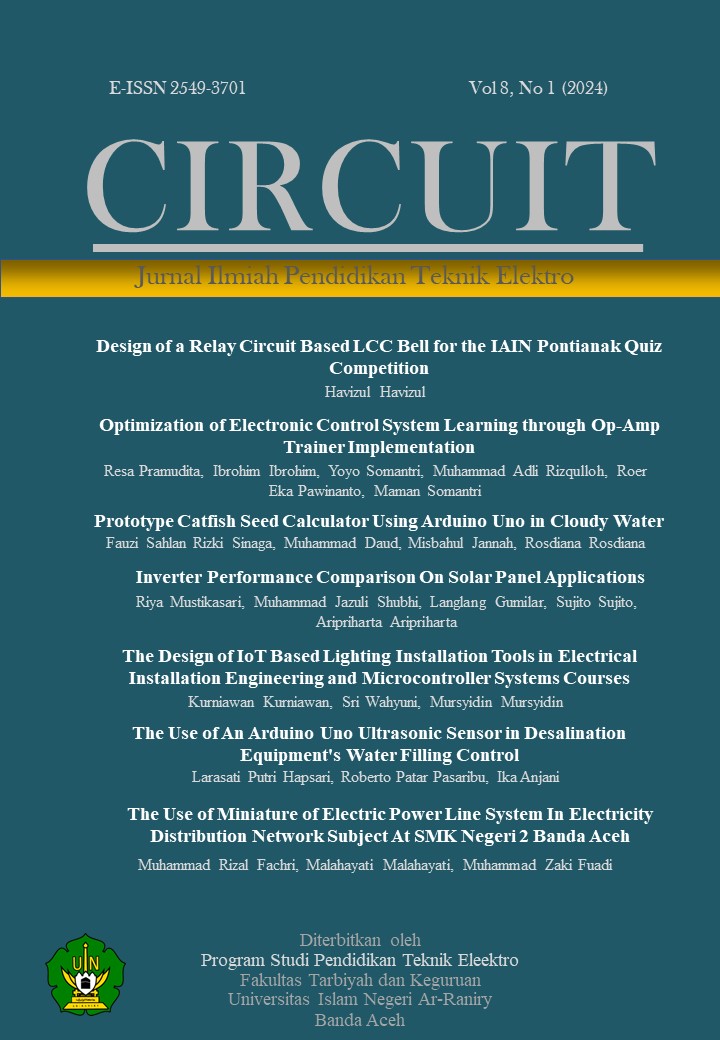Analysis of Control System and Signal Gain on Internet of Things-Based Electroencephalograph Circuit
DOI:
https://doi.org/10.22373/crc.v8i1.17058Keywords:
EEG, Brain Signal, Amplifier, Quality of ServiceAbstract
Epilepsy, characterized by recurrent seizures, exhibits changes in brain signals with amplitudes far exceeding normal conditions (up to 800µV versus 5-200µV). The varying phases of seizures (from a few seconds to minutes and accompanied by tonic-clonic seizures) pose a risk, especially in public spaces. In this case, we designed a wearable, portable EEG that provides real-time seizure detection. Our design uses four voltage amplifiers with good accuracy and one filter circuit (differential: 97.83%, non-inverting: 96.92%, 96.5%, and 97.99%). The signal is amplified for detection, then filtered for optimal compatibility with the microcontroller. In addition to amplified brain signals, balance, light, and GPS sensors are used as binary indicators of epileptic conditions. This data is transmitted via the IoT system, showing Quality of Service in the Good and Very Good categories in the parameters Packet Loss, Throughput, Delay and Jitter. It can be concluded that the transmission data system shows data in the good category and jitter value in the very good category.
Downloads
Published
Issue
Section
License
Authors who publish in CIRCUIT: Jurnal Ilmiah Pendidikan Teknik Elektro agree to the following terms:
- Authors retain copyright and grant the journal right of first publication with the work licensed under a Creative Commons Attribution-ShareAlike 4.0 International License (CC BY-SA 4.0) that allows others to share and adapt the work with an acknowledgement of the authorship and initial publication in this journal
- Authors are able to enter into separate, additional contractual arrangements for the non-exclusive distribution of the journal's published version of the work (e.g., post it to an institutional repository or publish it in a book), with an acknowledgment of its initial publication in this journal.
- Authors are permitted and encouraged to post their work online (e.g., in institutional repositories or on their website) prior to and during the submission process, as it can lead to productive exchanges, as well as earlier and greater citation of published work. (See The Effect of Open Acces)

